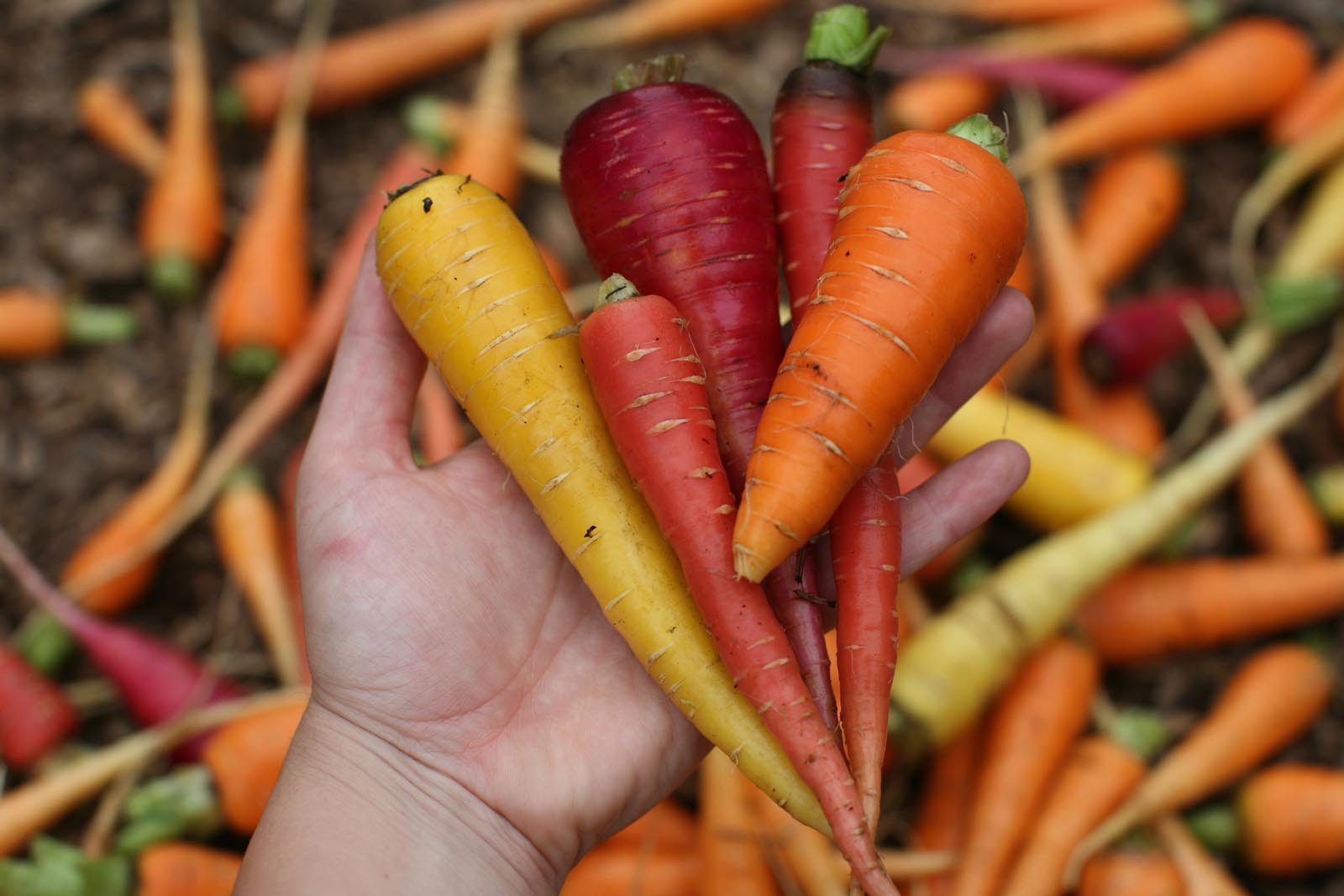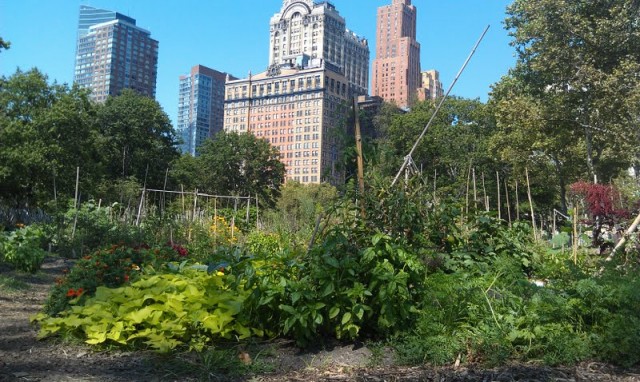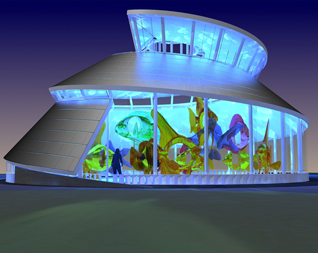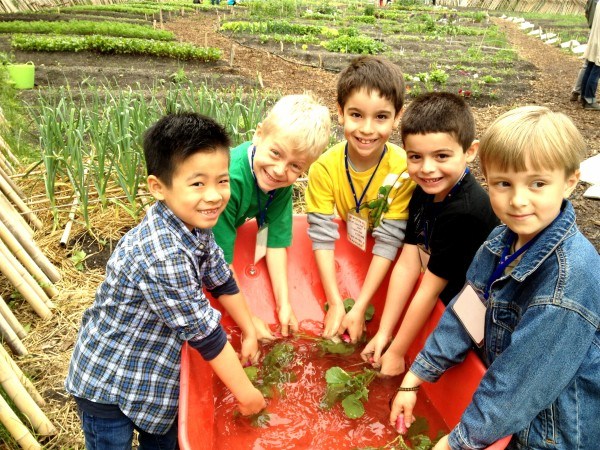
The Battery Urban Farm, a project of the Battery Conservancy, sprang up in the spring of 2011. It is the largest educational farm in Manhattan. I recently sat down for an interview with Lauren Kaplan, the farm’s Project Coordinator, to learn about how the farm has evolved, how it weathered Hurricane Sandy, and what 2013 holds for the organization. To get involved with the Battery Urban Farm, come to their volunteer days on Wednesdays from 4-6 pm.
What were some of the big projects you worked on this season– new school groups, other ways the farm expanded? What was different from the first year?
2012 was a thrilling year for us. As you know, The Battery Conservancy opened the farm in April 2011, and we worked with about 860 students over the course of that first year. In our second year, we recognized some new needs from our community, and made significant program changes to respond to those. We brought on a magnificent Farm Educator and Farm Foreman, developed curriculum for our guided farm education classes, streamlined field trip visits for schools and camps with our Enrichment Visit program–and we launched a City Seedlings summer program for little children, weekly volunteer hours, and monthly Saturday harvest hours and community farm-stand days.
We were lucky enough to partner with Grow to Learn NYC to get our food into school cafeterias, and decided to host a new Spring Fest event for our families and farm friends. (We even got a surprise visit from Growing Power’s Will Allen!) Ultimately we ended up doubling the number of students we worked with to 1,800. All in all, a pretty amazing second year.
What did the hurricane do to the farm? The offices? How does this bode for the future of the farm, Battery Park, and the Battery Conservancy in general?
The Battery Conservancy took a blow–there’s no doubt about it. Our office, on the lower level of a waterfront building, was quite literally washed away–we had floor to ceiling flooding for days. The walls fell down. We lost literally everything. The park was flooded, but between our amazing staff and tireless volunteers we managed to a lot of damage control–flushing out soils and cutting back plants. Recent soil tests have assured us that we can be planting by April!
With all of the unanticipated expenses and the month without any office space, equipment, or supplies, we are certainly set back, and are still in the process of recovery… But just like our gardens, we’re resilient, and are investigating new relationships and funding opportunities (including our soon-to-be-announced Indiegogo campaign!) to help us spring back.
There have been plans to move the farm’s location since it started… what is the plan now? What are you working on over the winter? What are plans for next season?
The Battery Urban Farm was originally started (at the request from eight students) as a one year project. But what do you say when those students–and hundreds more–all want the farm to stay? You say yes. Battery Urban Farm isn’t going anywhere. We might relocate or change in shape a bit, as we grow and make room for the Bikeway – but we’re here for good, as long as our community wants us and the funding is in place.
We’ve been using the winter to map out some really exciting new goals for this year, including plans to pilot a Teacher Training course to enable teachers and gardeners to become garden educators, roll out some educational signage in the farm, and to further develop our Education Apprenticeship and Farm Internship programs. The first big change you’ll see, though, is our Earth Fest event on April 20! [Note: to learn more about Earth Fest and other recent farm happenings you can read the newsletter here].

What are the Battery Conservancy’s plans for their other projects?
The Battery Conservancy has always followed sustainable practices in the farm, but this year we’re taking it a step further to not only practice but promote sustainability within our community. We are thrilled to be kicking off the season and celebrating Earth Day with Earth Fest: an event to bring families and farm friends together to promote food, farming and sustainability in our community. We hope you’ll join us for a day of service on the farm, which will include demonstrations, arts and crafts, workshops and games–and other activities to inspire all of us to eat thoughtfully, reduce waste and feel empowered to create more green space in our communities.
Also, keep your eyes open for more updates on the spectacular SeaGlass, our amazing aquatic carousel that simulates a ride to the bottom of the sea. The chambered nautilus-inspired pavilion is being constructed now, and we will have a sneak preview of the ride at our annual gala in June before it opens to the public in fall.

How do you see the Battery Urban Farm fitting in with the larger farming scene in New York City? Do you collaborate with other farms locally? Do you see Battery Urban Farm having a niche or a specific role to fill?
There are a lot of really exciting farms and garden projects sprouting up all over NYC, and one of our goals is to continue to encourage more of that–both passively by serving as a model and inspiring example, and actively through events and working with partner organizations. Each of these farms and gardens has something special to offer.
Battery Urban Farm is unique in two ways. First of all, we’re very accessible, located at street-level in the middle of a public park, rather than squeezed into an empty lot in the middle of a block or tucked away on a rooftop, where passersby cannot see (and often aren’t even aware of) the farm. Anyone can walk into Battery Urban Farm, including any of the 6 million visitors that The Battery receives annually. Second, we are the largest educational farm on public land in all of Manhattan. And as the #1 “top gainer” in the 9-and-under population (a whopping 129% growth according to a recent NY Times article), Battery Urban Farm is in a prime position to serve a key educational role in the lives of thousands of downtown children and schools. We are a model, and we hope to see similar projects in other NYC public parks to complement the good work that individual schools and community gardeners are doing. We all need to work together to inspire young farmers and a general appreciation for the work that we do (and the food that we grow).
Ultimately, though, we feel that each NYC farm or garden has a very important role to play and something unique to offer, and we try to connect our student farmers and their families with as many of these projects and organizations as we can.
Have your experiences working at the farm changed your views on sustainability? What do you see working and what needs to be improved in New York? Especially in light of Hurricane Sandy, have you noticed a conversational shift around sustainability and urban farming?
I have noticed that existing conversations about sustainability have begun to reference Storm Sandy as further evidence of our need to make positive changes. I unfortunately cannot say that I personally have seen many new conversations start in sectors that maybe weren’t previously concerned with sustainability – but I would love to be proven wrong about that. The shortest answer I can give to this question is to read the recommendations in the Urban Design Lab’s The Potential for Urban Agriculture in NYC. Short of that, one of the biggest changes I believe we can and should make now is to create a city-wide composting program. 40 percent of food is lost from farm to landfill. We recognize the need, we have the tools, and it can happen now. NYC needs to build on the great work that GrowNYC and the NYC Compost Project have already started with DSNY. I also think we should follow Chicago’s inspiring example in streamlining and formalizing the process to make public land available for farmers and farmer development programs.
On a more personal note, I believe that you make more positive change when you inspire healthy
eating habits than you do when you limit unhealthy ones. Rather than spending our time trying to tax or outlaw the bad foods, let’s educate kids on what good food is and get them excited about it by allowing them to grow it, tend it, harvest it, prepare it, and taste it themselves. Let’s see if they inspire their parents, like these boys did, to make changes at home–whether it’s cooking or composting more or wasting less. Let’s do more in this city to get parents and teachers to start gardens in their backyards. Let’s inspire people to want to make good or more well-informed decisions rather than trying to take something away from them.
[SeaGlass Carousel, which is coming to the Battery, is designed by WXY Architects; see our interview with architect Claire Weisz here.]
